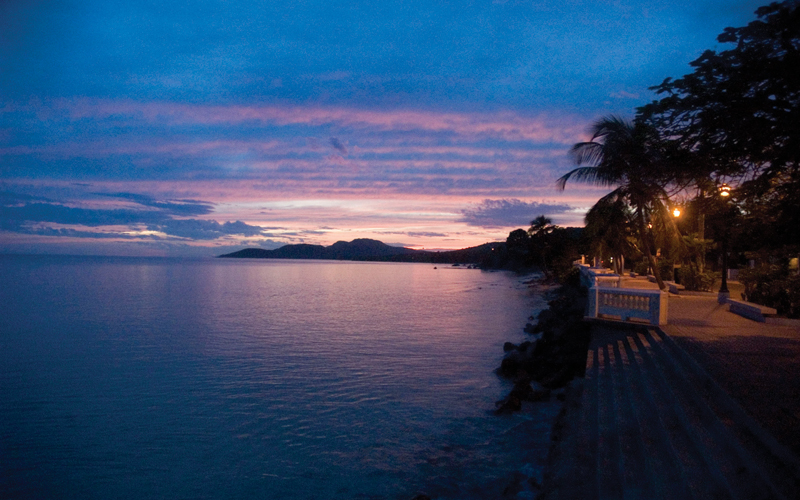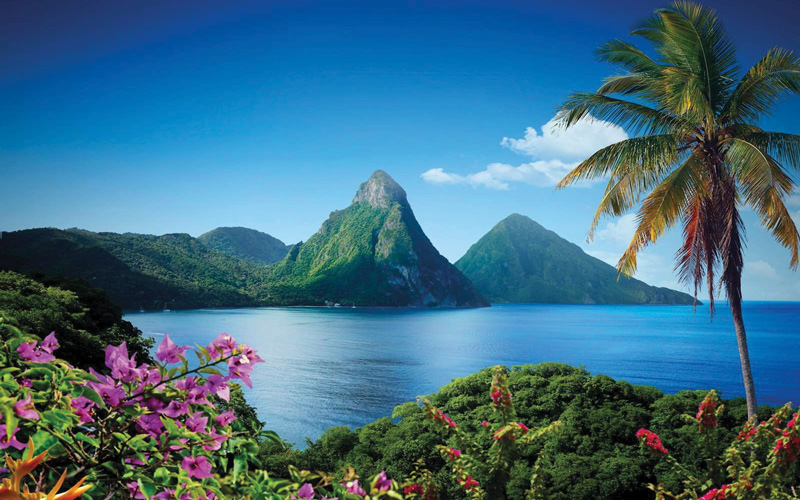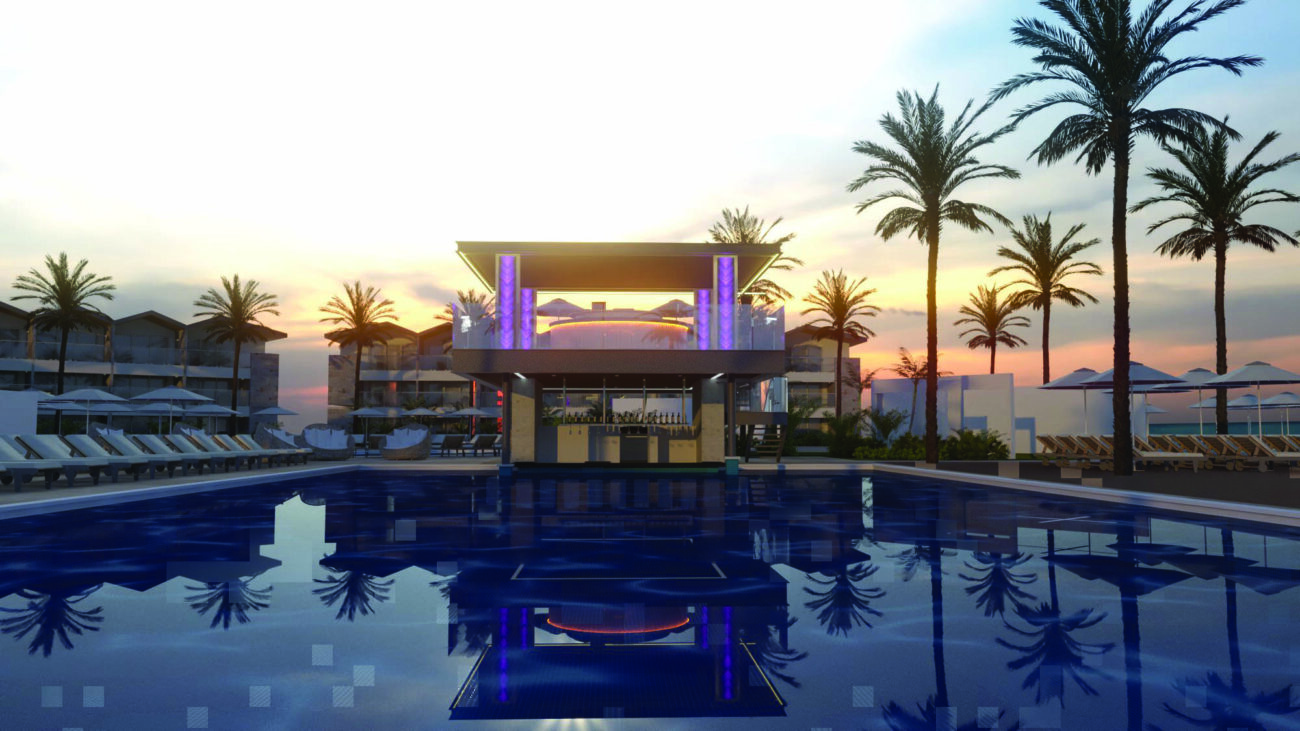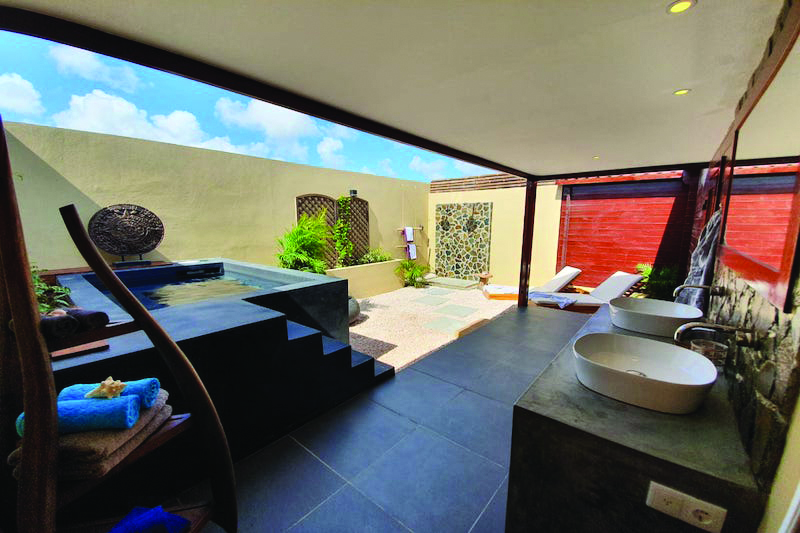Magic off the Mainland
They say that life on the somewhat primitive islands of Culebra and Vieques,

off the eastern coast of Puerto Rico, is similar to how life in the Caribbean was before tourists discovered them. It’s what these two islands don’t have that makes them so attractive – no high-rise hotels, no traffic lights, casinos, strip malls, or fast food chains. Located just a short, inexpensive ferry ride away, the islands feel like a safe ethnic neighborhood of America. If you want slow, head out to Vieques. If you want slower yet, head north to Culebra, or better yet, visit both, as my husband and I did. Lots of Americans vacation here, for there is no need to exchange money and cell phones work like a charm.
The Caribbean culture dominates here – loud, lively latin music plays everywhere, for everyone. Women with midnight black hair, milk chocolate skin, and generous hips sway to the music at the grocery store, and in parking lots by food trucks. On the beach, an elderly couple dances in the sand, lost in their own little world. Flip flops are the shoe of choice. Golf carts run the streets, while iguanas scurry across the sand, and chickens are absolutely everywhere, with roosters crowing their hearts out at every hour of the day. Happy children play and the locals greet one another by hugging and kissing. The air is filled with the delicious aroma of food frying, the sound of the pounding surf, while warm sun rays beam down from the brilliant blue sky.
CULEBRA
The island of Culebra is only 7 miles long and 4 miles wide. It is much less developed than Vieques and has only one community – Dewey. In our golf cart, we tool around checking out a different beach every day. We pick a restaurant to dine at each evening, as they take turns being open, so as not to compete. In the evenings, we play cards, go out for ice cream, sit on a bench at the ferry terminal and observe the sea of humanity lining up to go back to the main island. Beach goers with large coolers line up after a long day at Flamingo Beach, which is rated as one of the most beautiful in the world.
Flamingo is a mile-long crescent shaped beach, with sugar white sand, the water the stunning colors of translucent turquoise and mint green. You can rent whatever you want at the beach with a wide variety of food and drink available to purchase. There are two brightly painted graffitied tanks leftover from the US Navy, and the Marines did amphibious landings here.
VIEQUES
The Island of Vieques is 21 miles long and 4 miles wide, and has two small communities- Isabel Segunda in the north and Esperanza, in the south. Wild horses roam here. This larger island is much more popular, because of its bioluminescent bay – hence, car and go-cart rentals must be booked ahead of time. We resort to hiring locals/taxis for island tours and also hitch hiking, which we hadn’t done in decades. The locals pick you up in a second, are extremely friendly and helpful. We plan a day to check out the Sugar Mill ruins and the abandoned military bunkers that the tropical jungle is overtaking. There’s a record-setting ancient Banyan tree to visit and of course, many beaches, all different. Even though the incredible beaches are a big draw to Vieques, it is the magic in Mosquito Bay, that draws the visitors.
Only a handful of bioluminescent bays exist on the entire planet. The glow is created by billions of single-celled aquatic microorganisms called dinoflagellates that are trapped in the water. They cannot be seen with the naked eye, but at night, the concentrated billions in one place produce a magical blue-green glow when agitated, disturbed or touched in any way. These dinos react by producing light by a chemical reaction. They contain chlorophyll which captures light from the sun during the day through photosynthesis. They are so tiny that 200 to 300 of them could rest atop the head of a pin. They are so concentrated that 160,000 are contained in one liter of water!
Conditions have to be perfect to create the glow. Access to the ocean to bring in salt water is necessary but the passageway to the open ocean has to be small enough to restrict the flow. The bay must be shallow enough so that the water can evaporate and reach a much more concentrated salinity than the ocean itself. The bay has to be surrounded by mangrove forests, for the shed leaves provide the perfect nutrition. The Guinness Book of World Records in 2008 officially declared Mosquito Bay on Vieques Island the brightest bioluminescent bay in the world.
The moon phase needs to coincide with your travel dates. The moon’s cast light makes seeing the creatures’ magical glow almost non-existent and kayak tours do not depart when the moon is big and bright. Any changes in the delicate ecosystem can disturb the healthy balance of the bay, like wind or a hard rain which dilutes the salinity level and can take weeks until they will glow again. Hurricane Maria made the bay go dark for two years!
There are half a dozen tour companies that offer evening kayak trips into Mosquito Bay, which is named after a legendary pirate ship, “El Mosquito,” not the annoying insect. Each company has their designated area to lead customers so it doesn’t get crowded. We choose the company Travisias and book slots on the 9 pm tour as opposed to the 7 because I know the sky will be darker.
Our particular night is the exact date of a new moon. Our guide, Raul shows us how to light up the dinos, by sweeping a kayak paddle underwater. A beautiful phthalo blue color glows in its path and lights up the water like stars. He dips his hand in the bay and holds it in the air as “stars” trickle down from his fingers, and across his forearm. I play in the water by my side, pulling my hand through the water, lighting up the dinos.
Overhead, the night sky is very dark, except for the amazing display of stars. The Milky Way is so visible and packed with stars that the sky looks blurry. Stars above and stars below. A few times our group of 8 double kayaks “raft up”- hold onto each other’s boats’ gunwales in a large group while Raul teaches us fascinating facts about the bay and the dinos. Most of the homes around the bay are sensitive to the need for darkness and have red outdoor lights, which preserve better night vision.
Raul says that during a hard rain, Mosquito Bay is a wonder to behold. The splashing raindrops pound the surface making the dinos all light up. Afterwards, however, the bay is ruined, for the rainwater dilutes the saline content and drives the dinos lower where the heavier saltier water sits.
The 45-minutes we paddle around the bioluminescent bay passes far too quickly. I understand how this natural wonder is compared to a walk on the Great Wall of China or a gaze at the Great Pyramids of Giza, both of which I have experienced. I’ll take these magical dinos any day over a manmade wonder, and I consider myself so much richer for having trailed my hands through this magical bioluminescent bay.
www.discoverpuertorico.com





